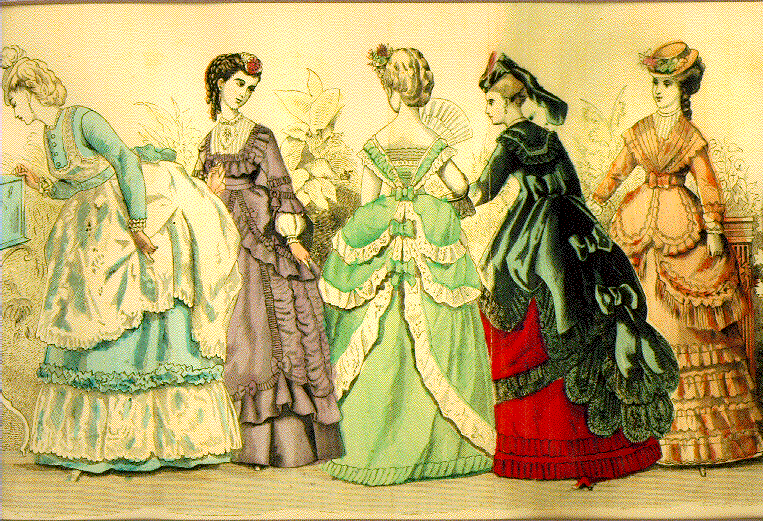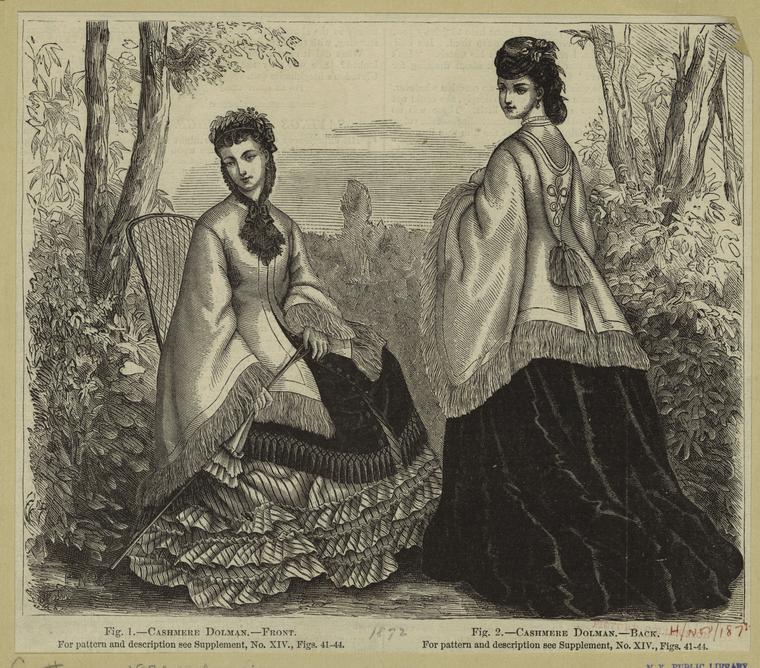By Pauline Weston Thomas for Fashion-Era.com
From the Regency Era to the Victorian Era -Queen Victoria 1837-1901
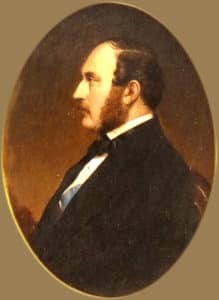
When 18-year-old Princess Victoria pictured in the header above, became Queen in 1837 no one dreamed she would reign for the rest of the century for another 64 years. The name Victorian to describe the whole period is a misnomer as for some years at the beginning of the era, Regency attitudes prevailed.
After 1840 when Victoria married Albert we see the heyday of Victorian attitudes of prudery and a strict outwardly moral code that lasted until about 1890 when Prince Edward the Prince Of Wales and his more spirited lifestyle was echoed in society.
Victorian Prosperity - The Country Becomes Urban
Victorian prosperity for the elite was built on the development of new machinery, new work methods and an underpaid workforce consisting of adults and children living in wretched poverty. Many people previously rural became urbanized by the new rail transport. Country families often drifted into towns to stay with other relatives whilst seeking work.
By 1850 half the country's former peasants were squashed into Britain's cities. The growth of industry, the building boom, the swift population spurt and spread of the railway changed the character of Britain too rapidly for many to understand.
Small towns were overtaken by growing industries to become uncoordinated and sprawling industrial dwelling areas. Rail towns such as Crewe soon developed as main rail junctions. These towns were close to other industrial towns like Stoke On Trent which became densely urban, spreading to make six joined towns.
By 1870 Britain had grown from 10 million at the start of the century to over 26 million.
Working Conditions
Millions of workers lived in slums or in vacated old decaying upper class houses. The occupants of slums had no sanitation, no water supply, no paved streets, no schools, no law or order, no decent food or new clothing. Many now had to walk miles to mill or factory work, whereas before they had frequently lived in the house or near land where they did their work.
Their hours of work began at 5.30.a.m.and were never less than ten. The brutal degrading conditions were so awful that drunkenness and opium taking was usual as their homelife had so little to offer.
You are reading an original Victorian Society article by Pauline Weston Thomas at www.fashion-era.com ©
The Railway - A Symbol of Victorian Progress
The railways moved goods, foods and people faster than canals or horse drawn wagons. They were the greatest factor in transforming Britain into an industrial nation.
They were a huge employer of people either on the railways, building new tracks or being a goods delivery service. Government legislation was affected as suddenly Members of Parliament could get to London with relative ease from far flung country regions.
The lives of millions were changed as suddenly the masses were able to travel further than ten miles in one direction. Now all could manage rare day trips to the new coastal seaside.
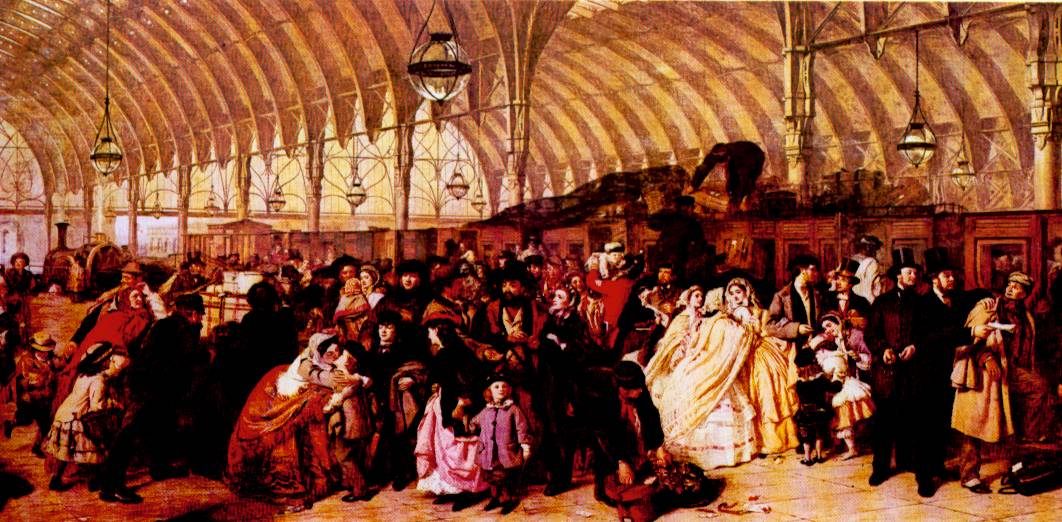
Rail Coach Conditions
Carriages were divided into categories called classes and the 1st class rail carriage was designed like a horse drawn coach. It had foot warmers, oil lamps and closed sides and roof. 2nd class carriages were roofed, but open sided.
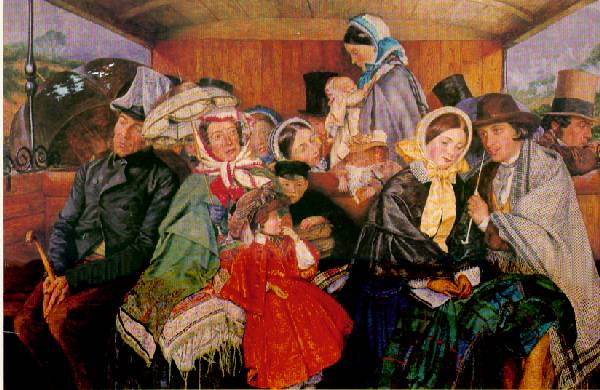
3rd class carriages were simple unroofed trucks without seats. In third class, passengers could be blistered by sparks and choked. In the open sided carriage illustrated above an umbrella and a parasol are used for protection. The man protects his top hat from flying sparks and another man dons a blanket to keep off the chill and dusty smoke.
By 1846 all carriages had to be roofed by law.
Emergence of New Social Classes
Different types of people were emerging. Employers moved away from their industrial source of wealth. They bought country estates and several generations later were often considered landed gentry. On the outskirts of towns managers built villas.
Owners built new streets of houses at the perimeter of town and these were occupied by skilled workman and artisans.
You are reading an original Victorian Society article by Pauline Weston Thomas at www.fashion-era.com ©
Class Divisions
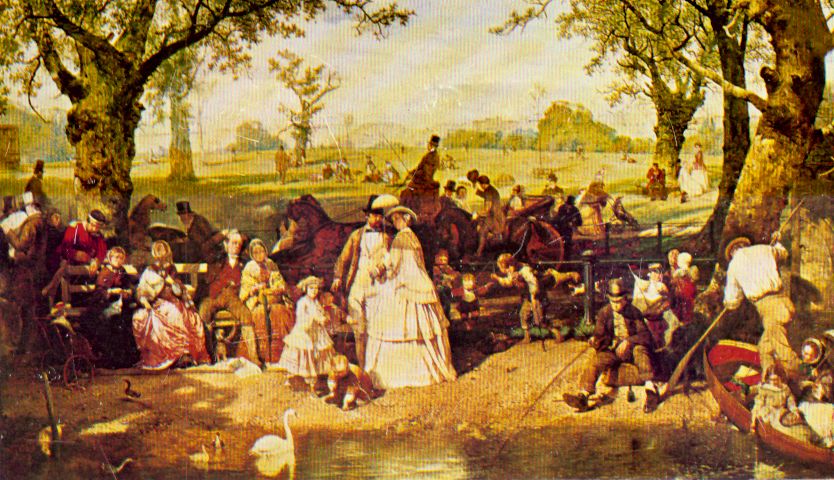
Theclass divisions on the railway were echoed throughout the land. In church the higher classes sat at the front in reserved pews and the lower classes at the back. In dress, the wives of wealthy industrialists were clothed in conspicuous finery as they were the social representatives of their soberly dressed husbands.
The new social class that emerged was the bourgeoisie middle class. An outward display of wealth through clothing and possessions showed to those who were still climbing the ladder that the former had reached the top.
